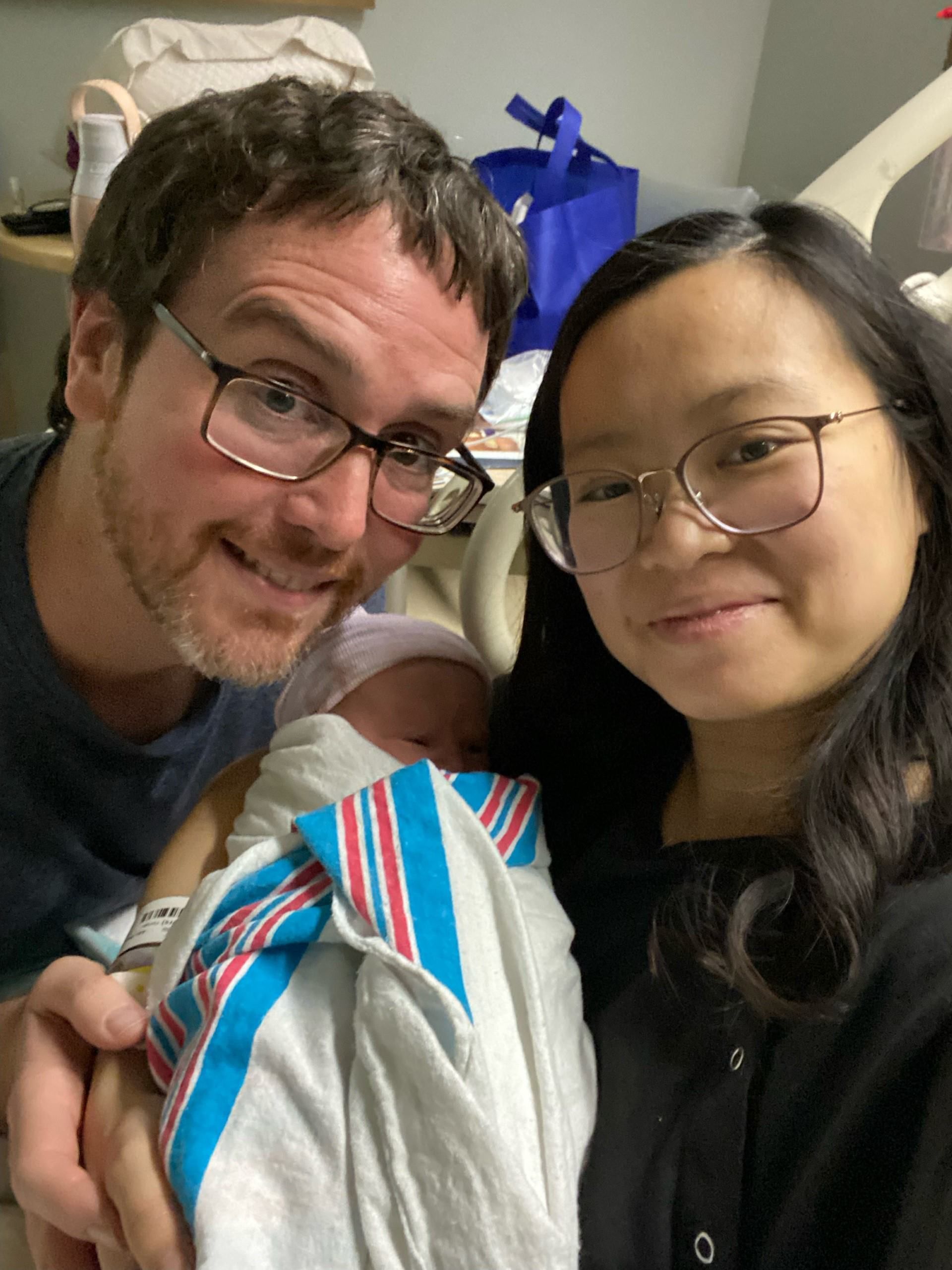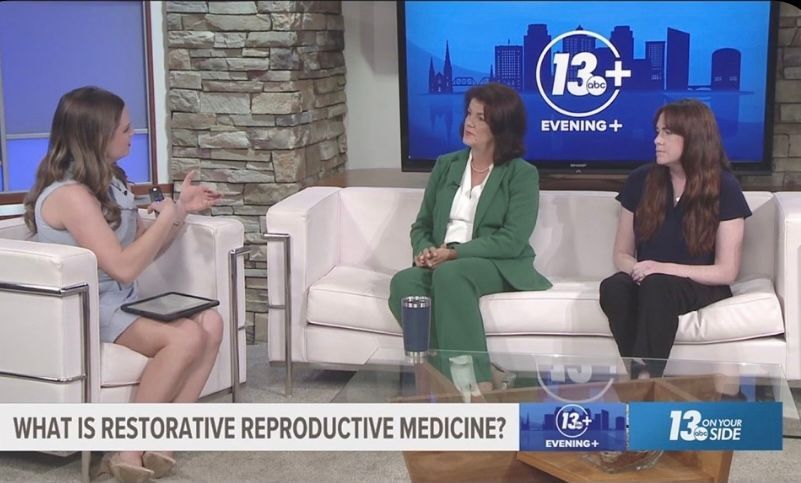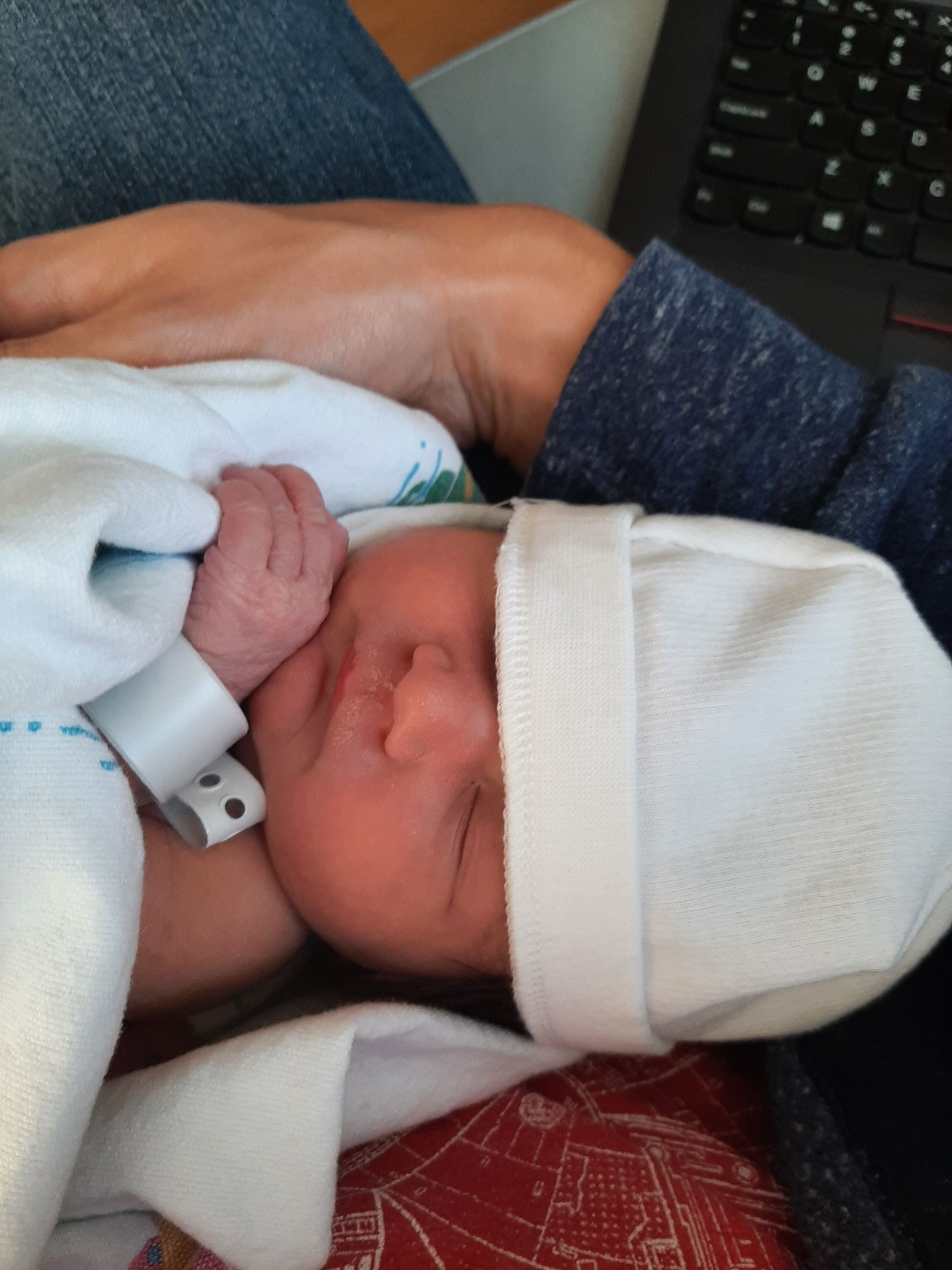THE 5 POSTPARTUM ESSENTIALS (THAT NO ONE EVER TELLS YOU ABOUT!)
Last year supermodel Chrissy Teigen and her husband singer/songwriter John Legend welcomed a beautiful baby girl named Luna into the world. Days after giving birth, Chrissy tweeted the following image with the caption, “Buying myself a push present:”
Not a new diamond necklace, not a fancy Chanel bag? Her push present was a perineal irrigation bottle! If you’ve had a vaginal birth, then you know what this is. You fill the bottle with water and spray on your bottom before, during and after you pee. Why? To prevent urine from stinging your sore and possibly torn vaginal area. Having one of these on hand for each trip to the bathroom greatly improves your postpartum quality of life.
Thank you, Chrissy, for the very real, very raw reminder that motherhood is beautiful, but also messy and sometimes painful!
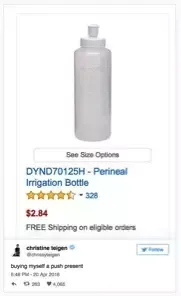
Even after labor is over, there are moments of awe and bliss mixed with moments of continued pain. Very few talk about the gritty details of that pain, though, or know how to handle it.
We spend a lot of time focusing on having a healthy pregnancy and easy labor, but not a lot of time talking about what happens to our bodies after delivery.
Fortunately, if you are preparing to give birth, there are a few items you can have on hand (in addition to a handy dandy perineal irrigation bottle!) that will make your early postpartum days a little better:
- Depends – Depends! There are seriously not enough good things that can be said about Depends. Who cares that they are bulky and unflattering and not the sexiest underwear in the world? They are comfortable and soft and they absorb the lochia after delivery. At the hospital the nurses may give you mesh panties and large pads. Here’s a tip though – the mesh panties rip easily and the large pads move around too much! Buy some Depends for the days and even weeks after your delivery. You’ll be glad you did.
- Padsicles – They may have a funny name, but padsicles are highly helpful, postpartum. Padsicles are made by concocting a mixture of aloe vera (for cooling), witch hazel (for inflammation), and essential oils, and spreading this mixture on a heavy duty overnight pad then freezing this pad in the freezer. Take a new pad out every time you use the bathroom. You can find various padsicle recipes online like this one.
- Spray Solution – If you don’t have time to make padsicles or don’t feel like it, simply spray the padsicle solution you’ve concocted directly on your perineal area. Store your spray in the fridge for some extra cooling effects. Here’s another handy recipe for soothing spray.
- Hemorrhoid Pads – Sometimes the pushing stage of labor can cause hemorrhoids. Not everyone gets hemorrhoids, but if you’re one of the lucky ladies who does, you’ll want to have some of these on hand. Buy some ahead of time just in case.
- Sitz Bath – The warm water of a sitz bath will feel good and help heal your vaginal and perineal area!. Luckily, hospitals usually give you both a sitz bath and a perineal irrigation bottle when you’re in the hospital. Don’t forget to take them both home and spare yourself the trouble of having to buy them.
Motherhood. Not always glamorous, but oh-so-worth it. Be like Chrissy Teigen and arm yourself with a few items to make the pain of partum days a little more bearable!

